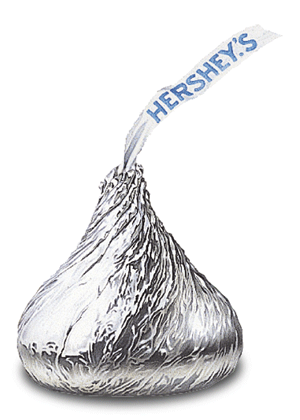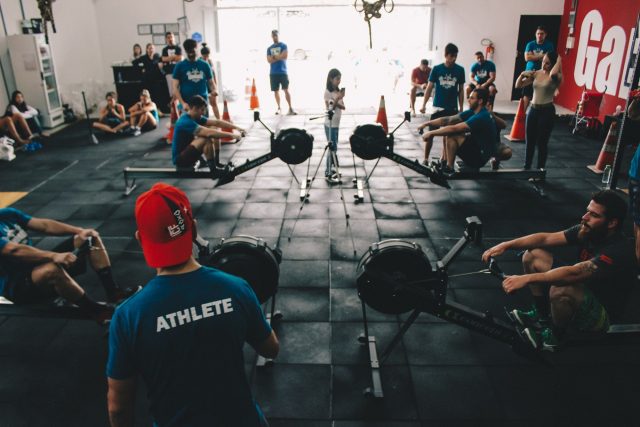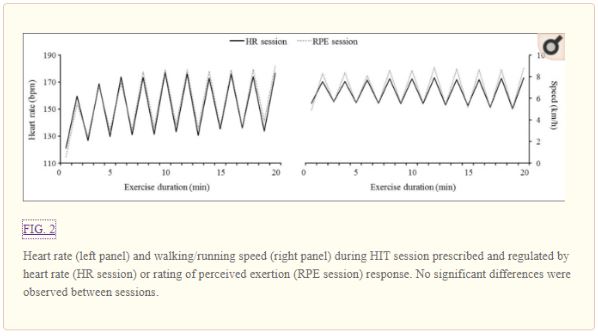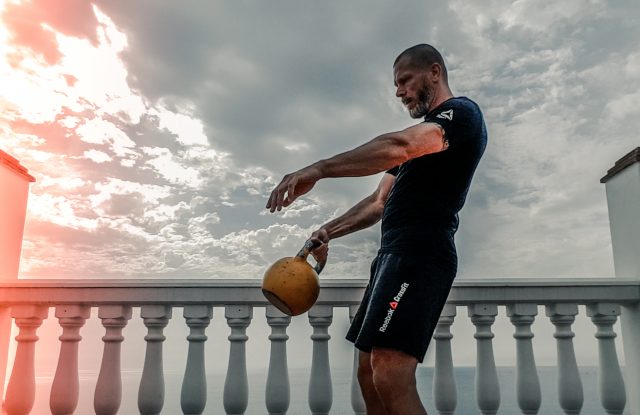
Welp, They Did it Again.
The talking heads spoke and now we’ve “discovered” that HIIT, High Intensity Interval Training is better than moderate intensity steady state training for fat loss.
Interval Training More Effective than Jogging and Cycling For Weight Loss Study Finds – the Independent
Short Bursts of Intense Exercise Better for Weight Loss- BBC
But, What is HIIT Anyway?
What Most People Think it is:
“High intensity interval training (HIIT) is when you alternate between high and low intensity exercise(s) or between high intensity exercise and a short period of rest.” – Precision Nutrition
and it is, but for it really to be HIIT we need to define what “High Intensity” is.
What HIIT REALLY is:
“HIIT requires ‘near maximal’ efforts performed at a heart rate (HR) ≥80% of the HRmax or the equivalent as expressed in the function of the O2max.”- Interval Study
More on that later.
What Had Happened Was,
A new paper came out recently in the British Journal of Sports Medicine and the title is pretty click-baity for a scientific article,
“Is interval training the magic bullet for fat loss? A systematic review and meta-analysis comparing moderate-intensity continuous training with high-intensity interval training (HIIT)” – Its a whole slew of authors.
Here’s part of the conclusion, who reads the whole paper anyway, methods and stats are for nerds, am I right?
“interval training provided a greater total absolute fat mass (kg) reduction than MOD. SIT resulted in greater total absolute fat loss when compared with MOD. A number of factors may positively influence the effects of interval training on total absolute fat mass, including supervision of exercise, walking/running/jogging as the exercise of choice, age (<30 years), study quality and intervention duration (<12 weeks). In general, our findings suggest that the ‘signal in the noise’ is the similar effects of interval training and MOD on total body fat percentage (%) management and the superiority of interval training for total absolute fat mass (kg) reduction, yet that these effects can be produced in a ‘time-efficient’ manner when using interval training.”
How Much Fat Difference We Talking About Here?
HIIT was found to be 28.5% more effective than moderate intensity exercise for fat loss.
 Yep, when they pooled 36 studies, 576 men and 522 women, with exercise interventions lasting between 4 and 12 weeks…
Yep, when they pooled 36 studies, 576 men and 522 women, with exercise interventions lasting between 4 and 12 weeks…
They found a 28.5% difference in actual fat loss between the groups.
“we found a superiority of interval training in the reduction of absolute total fat mass (kg). Indeed, both interval training and MOD were similarly beneficial in eliciting small improvements in total body fat percentage (%) (HIIT/SIT: −1.50%; MOD: −1.44%) and in total absolute fat mass (kg) (HIIT/SIT: −1.58 kg; MOD: −1.13 kg)”
Wait, But What?
0.45kg difference.
That’s 28.5%
It’s also,
One Pound
That’s right the difference, the magic bullet for fat loss was based on ONE POUND DIFFERENCE.
Wait, A Whole Pound Matters!
Damn straight it does.
Especially if we’re talking about a pound difference over every 4 weeks.
But we’re not.
Some of the included studies were as long as 12 weeks.
The effect from the cumulative data was, A POUND.
True, its better than no difference, but lets not overstate the impact.
We Can Let the Talking Heads Do That
Moderate intensity exercise was found to be almost as effective.
How can HIIT be a magic bullet?
James Steele, one of the studies authors has done a really nice job of trying to bring some real world context to the findings.
Not walking anything back, but trying to provide context and meaning where the reporting isn’t.
“It doesn’t surprise me that the media initially interpreted things to be saying that ‘HIIT’ (high-intensity interval training) was better than ‘MOD’ (moderate-intensity continuous training) for fat loss without considering all the nuance” – Steele via Weighty Matters
If we divide a pound (3500 cals) by 84 (days in 12 weeks) we’re talking 42 calories a day difference.
That’s like 2 Hershey Kiss’s a Day.

2 of them, that’s the difference, in a day, between HIIT and MOD
“Sub group analyses were small so should be taken with a pinch of salt. Probably the best conclusion is that, broadly speaking, interval training and moderate continuous training offer largely similar benefits for fat loss.” James Steele on Twitter
I’m Not Bagging On HIIT
Like all exercise modalities, it’s a tool in the toolbox.
HIIT has an application and a physiological effect/ adaptation and those need to be thought about before we jump on yet another exercise bandwagon and go buck wild with HIIT we should think about what it is and what those adaptations are.
Truth is, I really like high intensity intervals and use them all the time with myself and clients.
There’s just some problems when translating HIIT results from the lab to the real world.
The HIIT Programs Most People Do In The Gym, Aren’t.
Yeah, you’re doing intervals, but are they meeting the criteria of HIIT?
Not All Intervals Are Created Equal:
Ever do a “Tabata”, 20 seconds of work followed by 10 seconds of rest for 8 rounds?
Sure you have, 4-5 years ago those were all the rage in gyms and on Pintrest.
Tabata was everywhere.
This issue with the “Tabata” class at your gym is you’ve probably never put out enough intensity to be replicating the original Tabata study.
“The exhaustive intermittent training consisted of seven to eight sets of 20-s exercise at an intensity of about 170% of VO2max with a 10-s rest between each bout. – Tabata
that means you might (probably are not) getting the Tabata study results.
Do you realize what 170% of Vo2 Max feels like?
Unless you’re used to that type of output, it feels awful and you’re probably not going to get there voluntarily.
For 8 rounds with only 10’s of rest between them?
You’re going to want to die.
Most are going to hit the easy button and quit or drop the intensity LONG before they ever reach these metrics.
Ultimately, we’re often using the wrong metric when we talk about HIIT outside the lab..
Intensity Vs Effort
Intensity is a MATHEMATICAL quality.
It’s a measure, a percentage of maximum.
“the magnitude of a quantity (such as force or energy) per unit (as of area, charge, mass, or time” – Merriam Webster
Like in the Tabata study, the intensity of each interval was 170% of Vo2Max.
When the participants couldn’t achieve that output, the exercise was terminated, when they could perform 9 sets, intensity (in Watts) was added the next session.
“they exercised using exhaustive intermittent training. They were encouraged by the supervisor to complete seven to eight sets of the exercise. Exercise was terminated when the pedaling frequency dropped below 85 rpm. When they could complete more than nine sets of the exercise, exercise intensity was increased by 11″- Tabata
The researchers didn’t adjust the volume or intensity of each interval based on how the participants felt.
The exercise protocol was bound by mathematically defined, physiological parameters, that the participants achieved or didn’t.
The protocol ended when the defined High Intensity Intervals could no longer be reached.
They didn’t guess or rely on the exercise participants feelings of effort…
 The Achilles Heel of HIIT
The Achilles Heel of HIIT
Too often, we perform HIIT without an objective measure of intensity.
We go by how we feel.
Well, feelings lie, and the intervals, too often, are not achieving high intensity status (80% + of max heart rate).
Something as simple as the time of day can have an effect on our perceived exercise exertion and make the same level of output seem harder,
“chronotype seems to significantly influence fatigue values, perceived exertions and vigor in relation to HIIE (High intensity interval exercise) performed at different times of the day. Specifically, E-types will meet more of a burden when undertaking a physical task early in the day. Practical results suggest that performing a HIIE at those times of day that do not correspond to subjects’ circadian preference can lead to increased mood disturbances and perceived exertion. Therefore, an athlete’s chronotype should be taken into account when scheduling HIIE.” – Ratings of Perceived Exertion and Self-reported Mood State in Response to High Intensity Interval Training. A Crossover Study on the Effect of Chronotype
Stress levels, fatigue, environmental conditions, how much we enjoy a particular modality can all impact our levels of perceived exertion making an exercise feel harder than our heart rate would tell us it is.
Are Your HIIT Intervals Actually High Intensity?
In my experience there’s only one way to know for sure:
Use a heart rate monitor
That’s it.
Just get a heart rate monitor, Polar is generally considered the most accurate, but I’m sure Garmin and whatever else will do.
Quick Note: Fitness Trackers (Fitbit, Apple Watch etc), while not quite as accurate as actual, chest strap, heart rate monitors, they are suprisingly accurate.
Usually within about 5% of actual heart rate.
How Do I Know What 80% of my Max Heart Rate Is?
Use a max heart rate equation.
We’ve all seen the Fox equation:
220- your age= Max HR
Truth is, that equation is down right awful.
“The most widely used age-based HRmax prediction equation is the formula generated by Fox et al. (1971) of HRmax = 220-age. The Fox et al. formula is known to be quite variable, with a standard error of estimate (SEE) of predicted HRmax of 7–12 beats per minute (bpm)” – Measured Maximal Heart Rates Compared to Commonly Used Age-Based Prediction Equations in the Heritage Family Study
The Tanaka Formula is better (but still kinda sucks):
Max HR = 208 – (0.7 x your age)
It’s a reasonable starting place that you can adjust from, but it’s still probably wrong
“Our findings show that the prevailing age-based estimated HRmax equations do not accurately predict an individual’s measured-HRmax. Although the Tanaka-HRmax formula appears to slightly improve the prediction of an individual’s HRmax as compared to the Fox-HRmax formula, there is still substantial interindividual variation.“- Heart Rate Super Friends Galore
Fun Fact: I have a client in her 60’s who has touched 200+ beats per minute several times, according to the Fox and Tanaka equations, that’s not even possible.
Another client in her 50’s who is tapping out at 160bpm <—right in the wheelhouse for those equations.
Both are putting out CRAZY high effort.
The Truth is: Do HIIT Enough, Pay Attention and You’ll Figure it Out
If you use a heart rate monitor, pay attention to your RPE (rate of perceived exertion) on a scale from 1-10, take intervals to or very near actual exhaustion (8-9.5 RPE), over time, you’ll figure out where your 100% is and you can adjust from there.
But RPE is Essentially Based Off of Feelings?
True, which is why I don’t think you should rely solely on RPE alone.
That is, unless you’re used to HIIT and what maximal efforts actually feel like.
Plus, you have an iron will, hate yourself something fierce and have li
The evidence shows RPE is a VERY effective substitute for a hear rate monitor in estimating Intensity of effort, at least in new exercisers.
 “The data analyses showed no significant differences in HR response and walking/running speed between HIT sessions prescribed and regulated by HR or RPE. This finding suggests that the RPE scale is a simple, inexpensive and useful tool for prescribing and self-regulating HIT in young subjects.” – Rating of perceived exertion as a tool for prescribing and self regulating interval training: a pilot study
“The data analyses showed no significant differences in HR response and walking/running speed between HIT sessions prescribed and regulated by HR or RPE. This finding suggests that the RPE scale is a simple, inexpensive and useful tool for prescribing and self-regulating HIT in young subjects.” – Rating of perceived exertion as a tool for prescribing and self regulating interval training: a pilot study
And RPE seems to remain stable as your fitness level improves.
So it does seem reasonable that RPE can be used as part of your intensity stratification, but I don’t think most should rely solely on RPE.
We All Sandbag It.
Maybe not always, but it happens.
Especially when there is no one else there to hold us accountable.
“The subgroup meta-analysis demonstrated that improvements in total absolute fat mass (kg) caused by interval training are higher with supervision during interval training protocols, providing evidence that supervision during interval training is an important variable for total absolute fat mass (kg) reduction. This might occur because it can help interval training practitioners to train with higher intensity of effort. Considering that supervision might guarantee adherence to the prescribed protocol, the results provided by studies with supervised sessions are probably more reliable. Therefore, it is important that interval training studies consider providing supervision to guarantee accountability.” –HIIT Super Friends
We’ve all had times where we go easier than we intend.
Days when we’re smoked.
The gas just ain’t in the tank.
And some folks, well, exercising to the point of near exhaustion..
It’s Just Not In Them
Some just don’t have the will or experience to voluntarily push that hard and be that uncomfortable for any extended period of time.
They’ll tell themselves its a 9, when we can all see (and the heart rate monitor will tell you) it’s a 7 at best.
There’s a BIG Difference Between a 9 Effort and a 7 Effort.
Sometimes you need to be able to look down at a HR watch and realize YOU NEED TO PICK IT UP.
Whats the Best HIIT Protocol?
The realistic one you can do.
Too often HIIT protocols you see in magazines and online are unrealistic.
Too many intervals, the duration of the intervals is too long, the rest periods too short.
When put into action many HIIT programs don’t actually allow for the achievement of High Intensity Intervals,
“Panissa et al used a 22 min protocol with 1 min at 90% and 30 s at 60% of HRmax. However, it seems again unfeasible for participants to achieve the prescribed intensity of effort based on the percentage of HRmax since both the times taken to increase and decrease HR seem too short.” – HIIT is Super Duper
In my experience, depending on the amount of rest you’re allowing, you’re looking at 6-12, 90% HR, bouts before muscle fatigue sets in and HIIT intervals becomes less than High Intensity.
Here’s What I Suggest For HIIT:
- Get a HR Monitor, or at least a fitness tracker with a hear rate setting/ readout.
- Get warmed up. Take 5-10 minutes and get your body ready and heart rate elevated some. This way the first interval wont be so awful and takes 2 minutes just to reach 80% or greater HR.
- Use realistic training variables. Don’t take it to 90%, recover to 80% and try to get back to 90%, you’re going to get 2 or 3 intervals and then be smoked. Allow for some recovery between high intensity intervals, but not too much, you’ll get cold. General rule “HR at 110, go again”.
- When the quality of the intervals drops off (duration or ability to achieve the desired effort) STOP.
For example lets say you’re doing bike sprints.
170bpm is your 90% HR.
On the first 6 reps you achieve 170bpm.
Rep 7 comes and your legs give out before you can get to 170bpm….STOP
You’re done.
Yes, you can always manipulate the parameters, lengthen the rest periods, shorten the High Intensity Intervals, etc.
But the key factor is to achieve the desired intensity on each Interval performed.
Bro Tip:
You’ll be more successful performing HIIT with familiar training modalities.
Don’t attempt to use a modality you’re not comfortable and confident with.
If you’re not used to the spin bike, don’t use it.
Never swung a kettlebell before?
You’re not going to be able to perform repeated high intensity intervals with that.
Local muscular endurance/ the primary muscles in the movement, and confidence in your ability to perform the exercise in a fatigued state matter a lot.
Especially when you’re in “the suck” and with true HIIT, you’re going to be deep in “The Suck”
Next time we’ll go over the adaptations associated with HIIT and why it’s not always the “cardio” wunderkind it’s often claimed to be.




[…] So we’re going to assume you’re a masochist and you actually perform your HIIT intervals at 80%+ of your max. […]